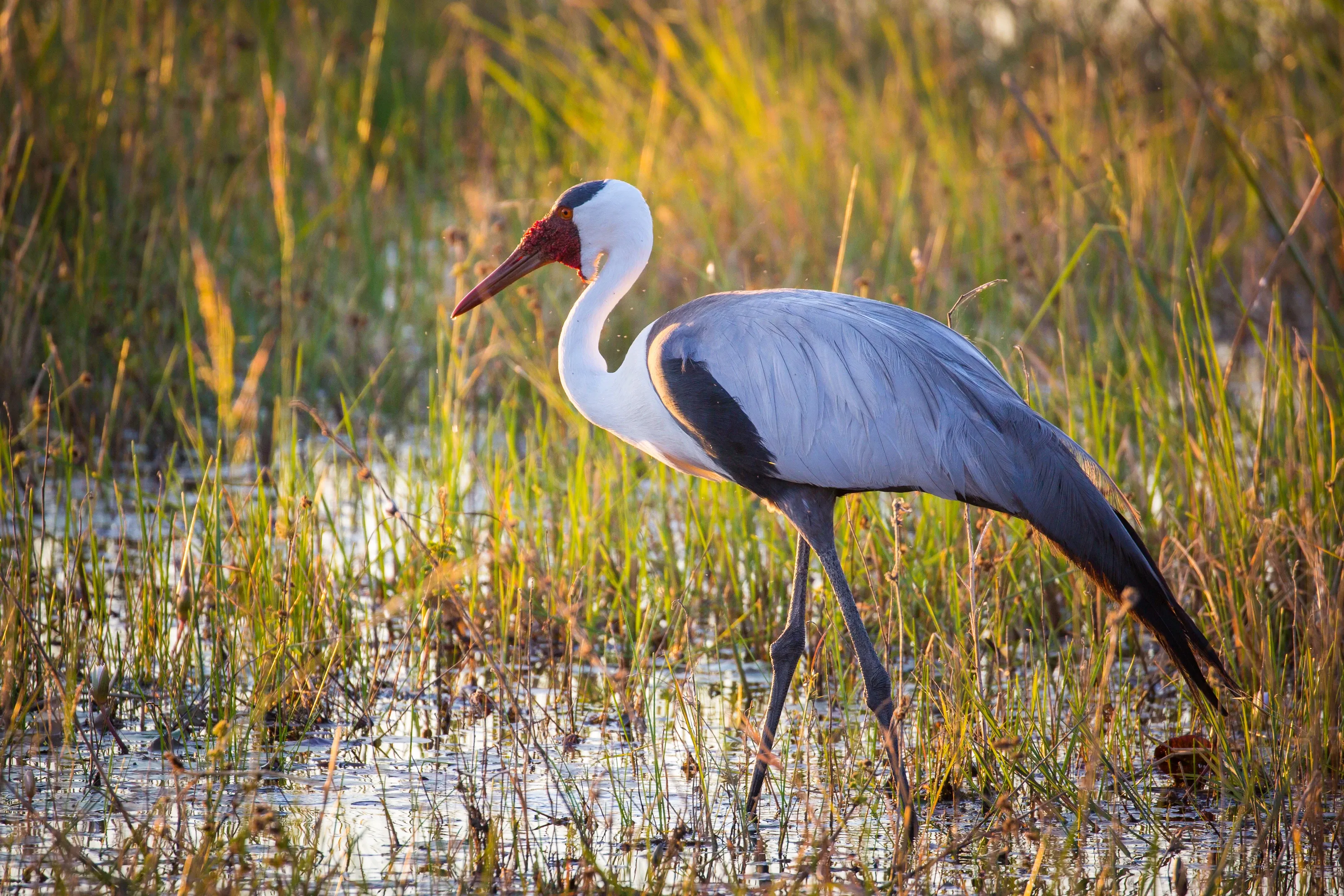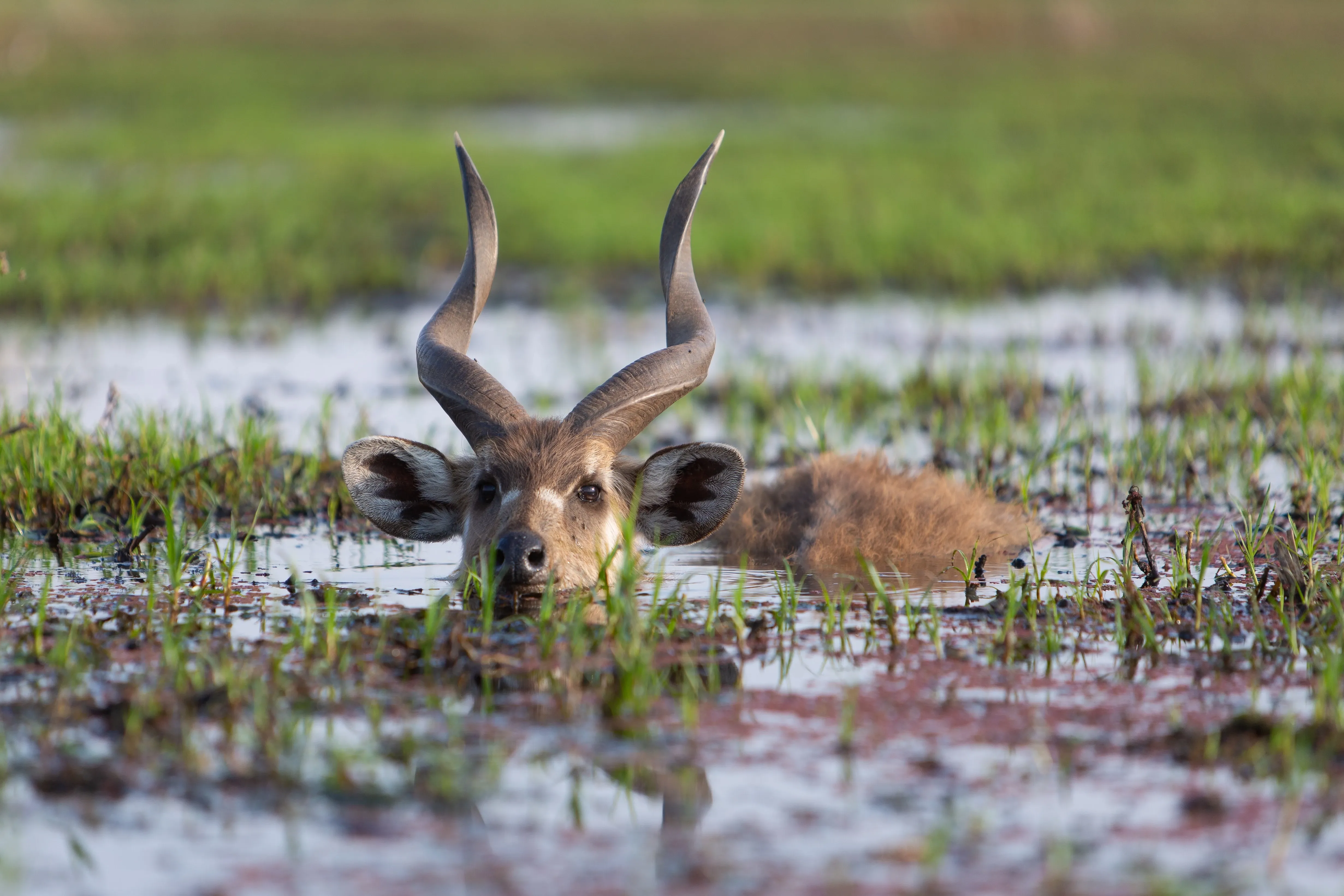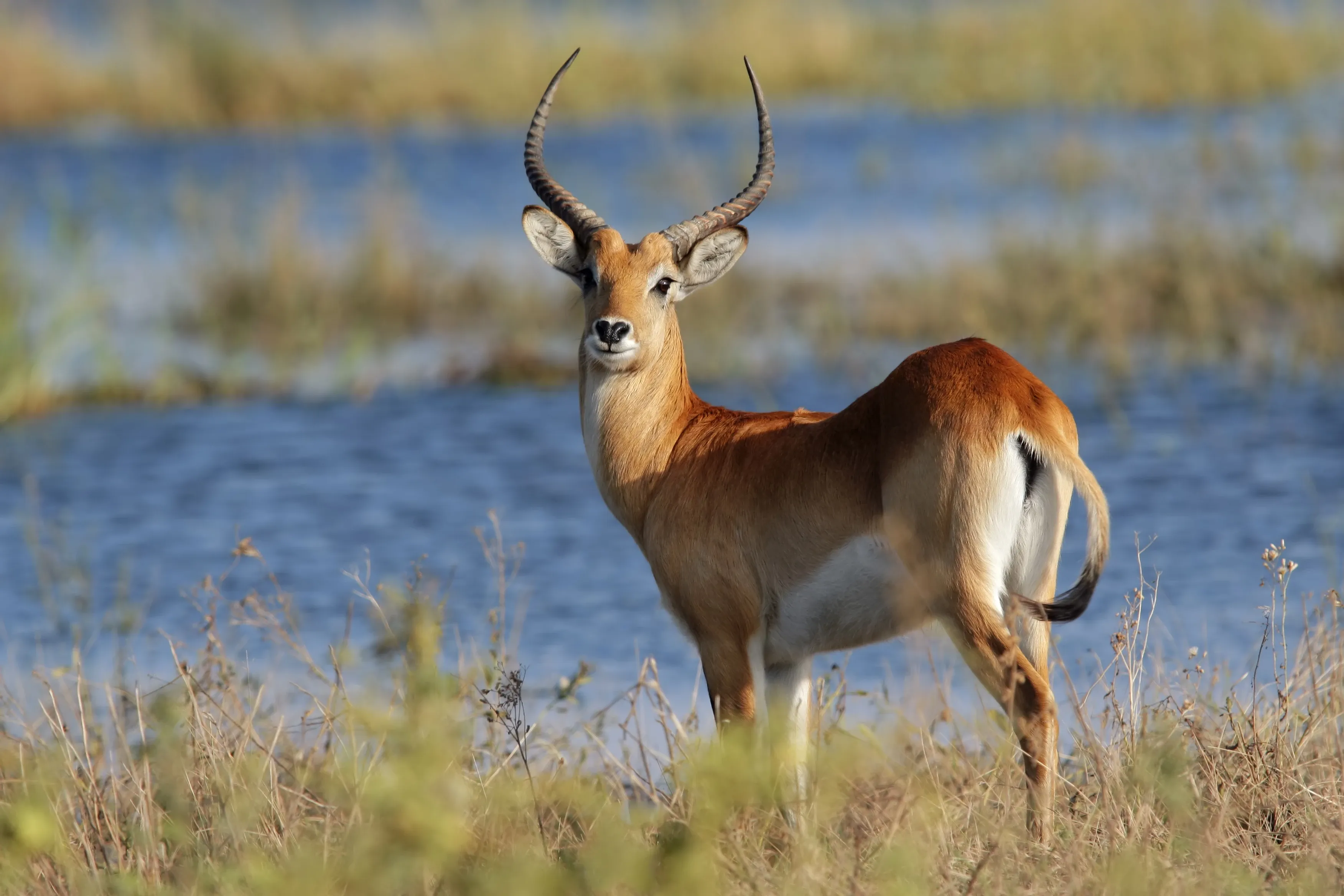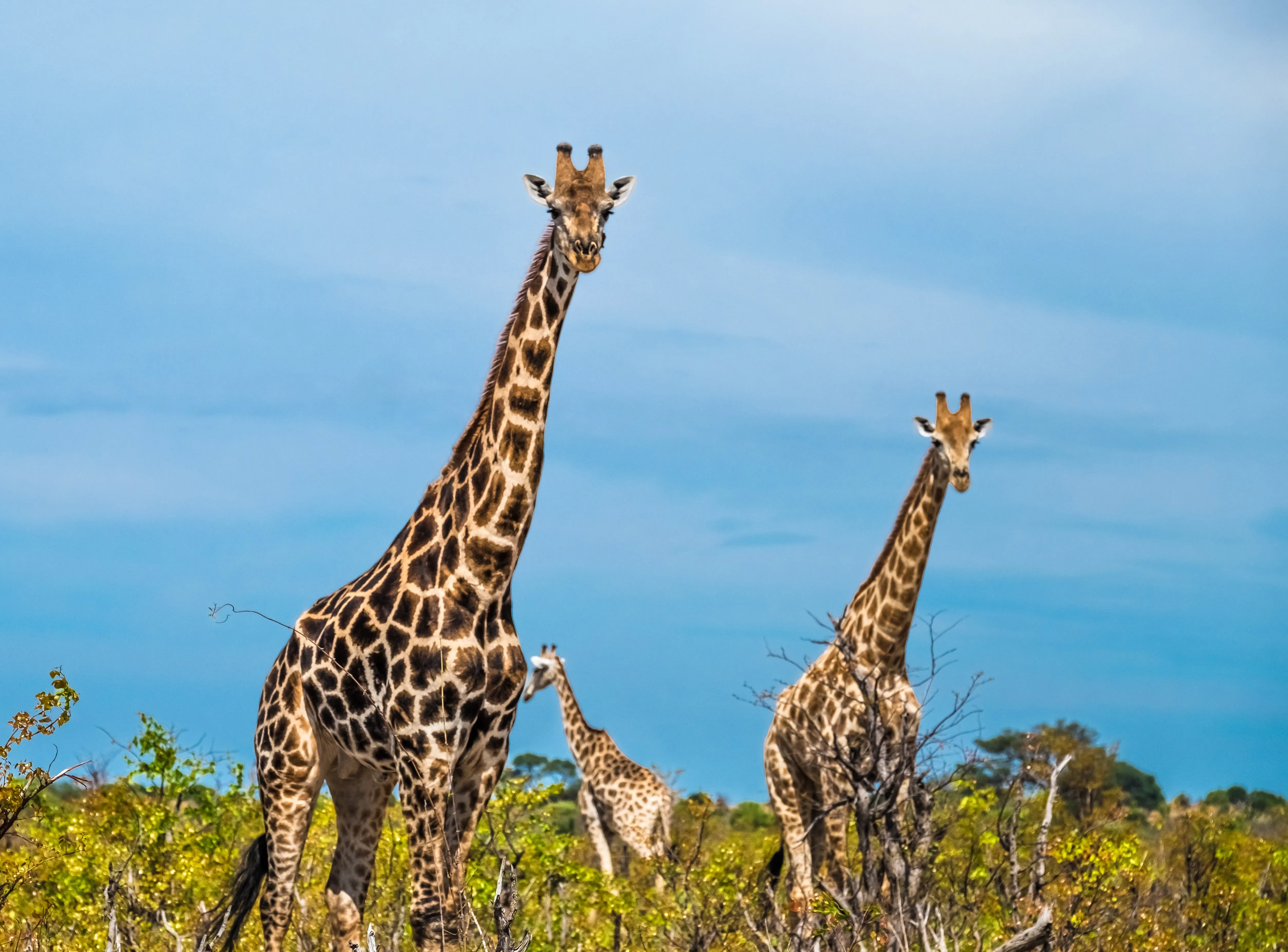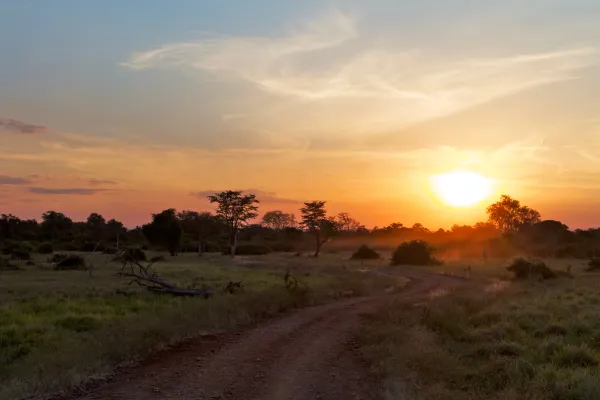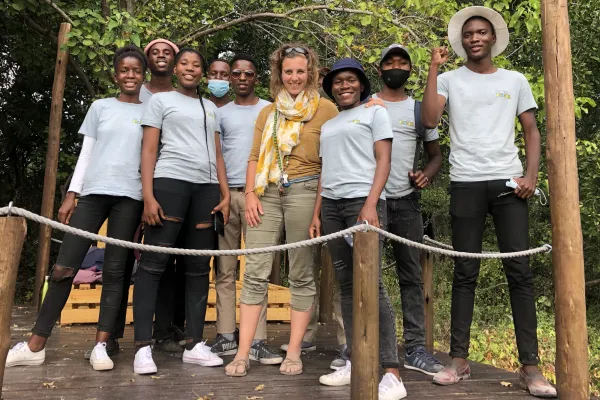Okavango Delta – Jewel of Botswana’s wildlife
Described as the ‘river that never finds the sea’, the Okavango forms a 15,000 square kilometre delta of lagoons, channels, floodplains and islands in north-west Botswana. The delta itself is a geological rarity as a series of fault-lines guide the course of the Okavango River through the Kalahari until they create a giant alluvial fan. A literal oasis in the desert.
As the third largest river in Southern Africa, the great Okavango emerges from its Angolan watershed and tributaries flows through the Caprivi Strip of Namibia.
Okavango Delta: A real wildlife jewel
Botswanas famous huge wetland provides sustenance for a spectacular array of big game, birds, fish and plants. From giant buffalo herds of 3,000 animals, to elephants to a multitude of antelope and giraffe and of course the iconic African savannah predators. The Okavango has it all and more.
The specialised habitat provides a stronghold for rare or endangered species such as the aquatic sitatunga antelope or the critically endangered wattled crane.
Angolan origin
The Okavango is one of the world’s largest inland water systems. Its headwaters start in Angola’s western highlands, with numerous tributaries joint up to form the Cubango River, which enters the Caprivi Strip of Namibia. From here it is known as “Okavango” as it meanders through this fascinating narrow strip of land (another story, that’s for sure!), and enters into Botswana in a region known as the ‘panhandle’.
The water which gathers during the Angolan rainy season between November and February flows down the panhandle and at a staggering rate of some 11 billion cubic metres per year. The panhandle of the Okavango River channels by parallel fault lines, and close to the small village of Seronga the river flows past a continuation of the Africa Rift Valley known as the Gomare fault.

A maze of water
From this point the waters fan out into the delta itself, and an array of endless waterways and islands. While the smaller secluded and forested islands of the panhandle are superb for fishing or birdwatching safaris, the majority of game is located within different regions of the huge fan-like delta.
The northern reaches maintain water all year round, while the fringe regions may or may not depend on the extent of the variable floods. The slow meandering pace of the floods ensures that the headwaters only reach the southern regions some nine months after the rains in Angola.
Secondary flooding may occur due to local rainfall. Depending on the region of the delta, the area varies from permanent waterways with small islands, to seasonal floodplains and to larger palm-clad islands.
Wildlife and birding mecca
Game concentrates are generally good throughout but it is normally in the central and southern areas where they peak. It is impossible to name them all, but the variety includes Cape buffalo elephants, giraffes, wildebeest, zebra, kudus, red lechwe, lions, leopards, wild dogs, and cheetahs.
Birding is spectacular with notable specials including Pels Fishing owl, a notable gold star sighting. Depending on the camp or region of choice, game viewing is done by vehicle, on foot, motorboat, or traditional dugout canoe. Due to the variations of region, rhythm, and season, an intimate knowledge of the delta is vital to plan the best possible safari options.
Sign up for the newsletter
By clicking on “Subscribe now” I will subscribe to the Conscious Explorer newsletter with all the information about mindful travel. Information on the success measurement included in the consent, the use of the shipping service provider MailChimp, logging of the registration and your rights of revocation can be found in our privacy policy.

